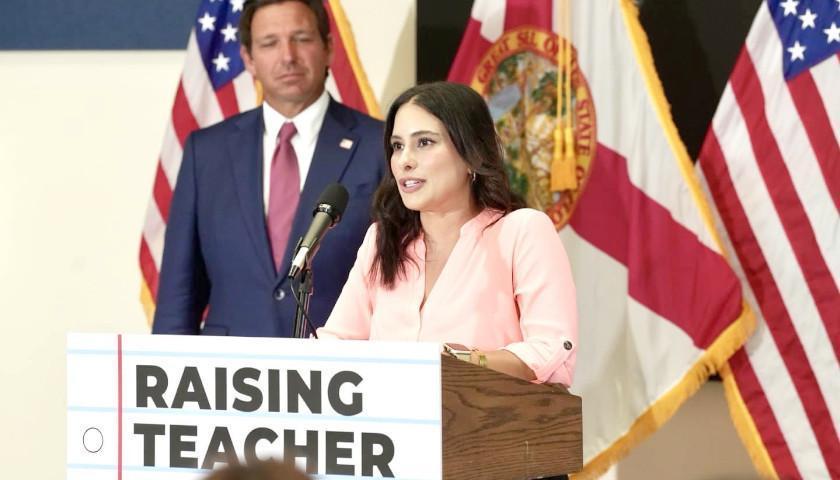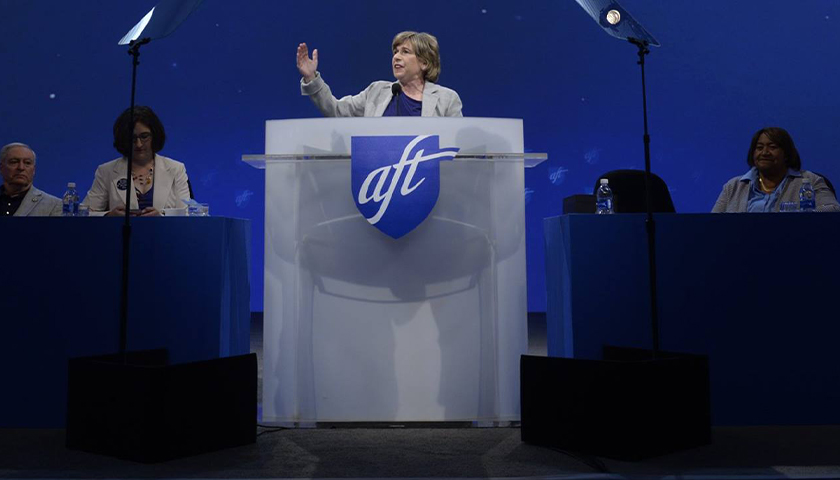by Nat Malkus and Tracey Schirra
The seemingly-omnipresent call to raise teacher pay is sounding even louder this year, as rising inflation threatens to render moot any raises made in previous years. Yet even before that became apparent, state pay raises for teachers were heading toward a crescendo. There were numerous historic raises in March 2022 alone: Mississippi’s Gov. Tate Reeves signed a pay bump of roughly 10 percent, New Mexico’s Gov. Michelle Lujan Grisham signed a base salary increase average of 20 percent, and Florida’s Gov. Ron DeSantis announced $800 million in additional funds to raise teachers’ starting salaries. In April 2022, Alabama’s Gov. Kay Ivey approved raises that range from 4 to 21 percent depending on teachers’ experience levels.
Raising teacher pay may be good politics — and even prudent policy, at times — but it can also cement a preexisting problem in the way we pay teachers: master’s degree pay premiums. A significant number of districts across the country boost pay by thousands of dollars for teachers who have a master’s degree or other advanced degree, collectively spending a whopping 12 billion dollars a year on these premiums. Yet as many have pointed out, study after study have shown that whether a teacher has a master’s degree has no consistently positive impact on student achievement, outside of narrow circumstances. In other words, master’s degrees don’t effectively translate into more effective teaching, but most districts pay teachers as if they do.
States that are already planning to issue pay raises have a prime opportunity to help solve this problem. Rather than simply exacerbate the costly and indefensible pay gaps between teachers with and without master’s by issuing blanket raises, states can leverage pay raises to give districts new incentives to remove these pay premiums — without cutting anyone’s existing salary.
Districts currently lack strong incentives against continuing to enshrine the master’s pay premium into their pay schedules. District officials are understandably wary of upsetting teachers or unions, both of which tend to like straightforward pay increases and view substantive pay reforms unkindly. Many teachers have good reason to view abolishing the master’s premium askance, as they pursued their master’s degrees knowing the cost would pay off for them down the road. Meanwhile, schools of education benefit from the guaranteed appetite teachers have for master’s degrees, with education master’s the second-most-awarded master’s degrees in the country. Ultimately, without incentives to enact changes — and with strong incentives not to — most districts will maintain the status quo.
This is where states leaders can step in and use already-planned pay raises to reverse the incentives. The basic play for states involves giving a base funding increase to all districts, but a substantially higher increase to districts who phase out master’s pay premiums. Even better, it’s possible to do this without cutting any teachers’ current pay. Instead of a uniform 8 percent funding increase for teacher pay, a state could increase funding 5 percent across the board, while providing an additional 2 percent increase for districts who sign on to a moderate push against the master’s pay premium or an additional 4 percent for districts willing to push harder still. Of course, for states willing to issue 20 percent raises in pay, the opportunities to incentivize change are even greater. We detail what these approaches might look like in our AEI report on the same topic, but, in brief, they ask districts to provide a much larger share of funding increases to raise the pay of teachers without advanced degrees, while allocating a relatively smaller share of the funding to teachers with advanced degrees who already earn higher salaries.
By promising additional funding to all districts, whether or not they adopt the state’s preferred pay reforms — but allocating more funding if they do — states can alter districts’ incentives without overly aggravating districts and teachers. States and districts can make these changes, not to deter teachers from getting beneficial advanced degrees, but to fix the perverse incentives that push thousands of teachers to attain degrees that provide students little or no academic benefits.
The recommendations we make involve hard choices. But make no mistake, states and districts make choices every year. If states continue with business as usual or layer pay raises on current structures, then most districts will choose to maintain expensive, indefensible, and inequitable master’s pay gaps, as they have chosen so reliably in the past. Districts face a difficult set of incentives on this issue, but when states raise pay, they have the chance to shake up those incentives and help districts end this unjust and expensive artifact.
– – –
Nat Malkus is a senior fellow and deputy director of education policy at the American Enterprise Institute. Tracey Schirra is a research associate at AEI.






Anyone else to the point of being irate over the never-ending drumbeating for teacher pay raises? Produce some decent results and I will listen to the justification for higher pay.